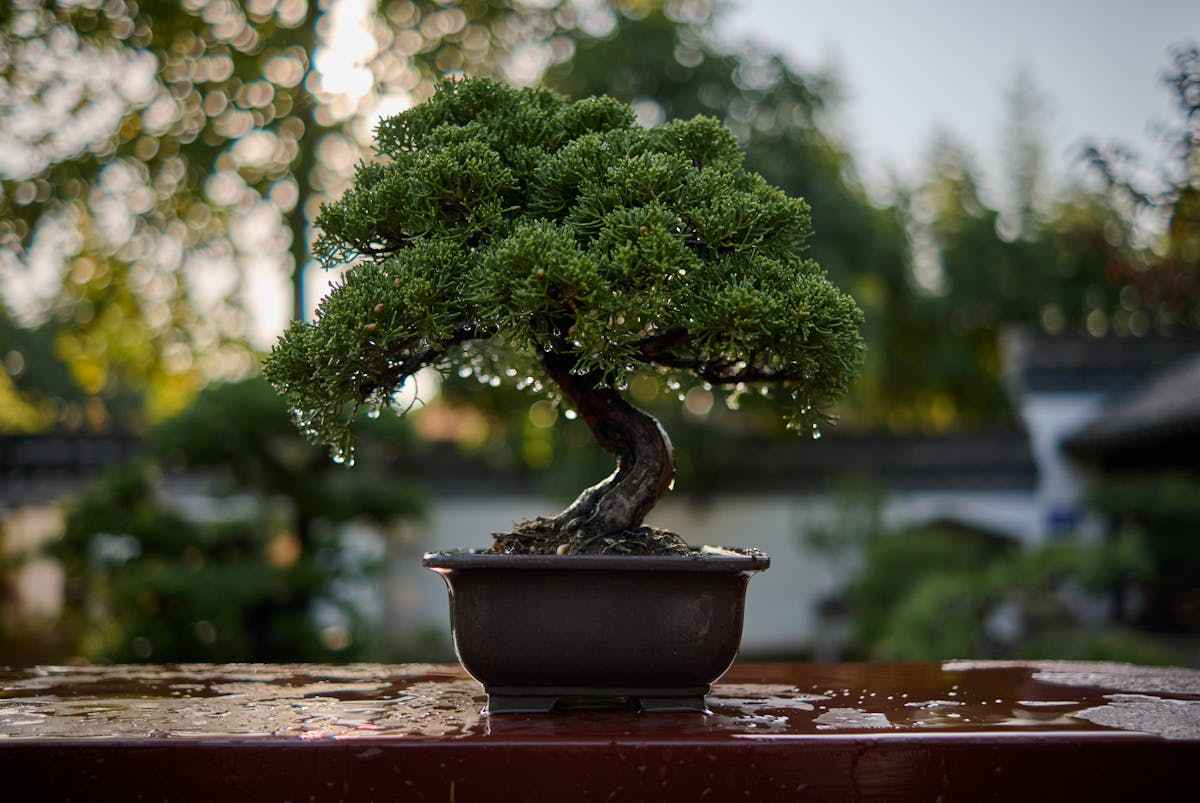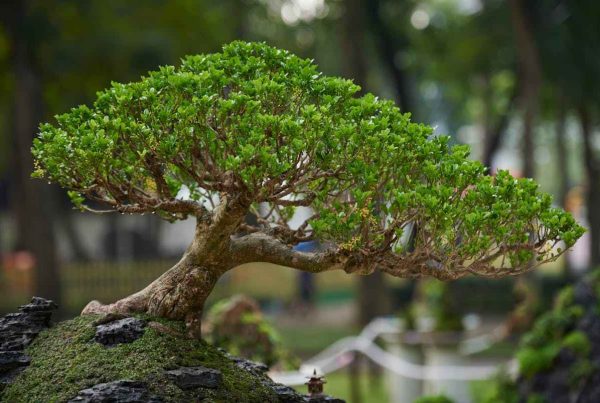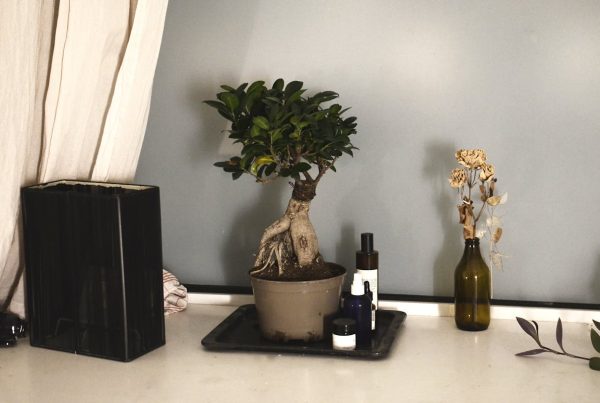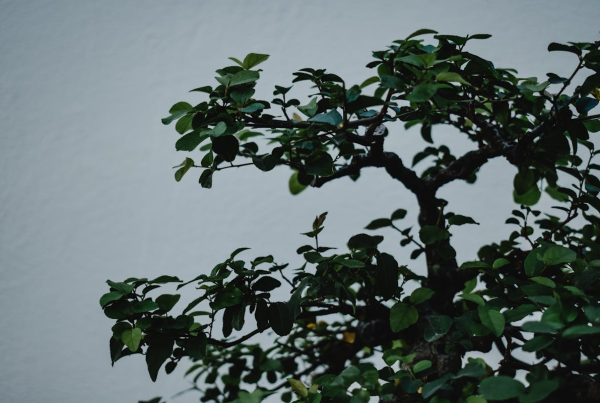Before discussing these two techniques, we need some background on tree growth. This guides us in mastering bonsai tree-pruning techniques.
Trees have a natural tendency to grow with apical dominance. The plant’s central trunk develops stronger than its side stems. For example, in a branch, the main trunk of the branch is more dominant than its side branches. This mechanism makes trees grow taller to avoid the shade of rivals. The growth spreads to the upper and outer trees. The inner and lower branches die. The upper branches grow too much. These are all bad for bonsai aesthetics.
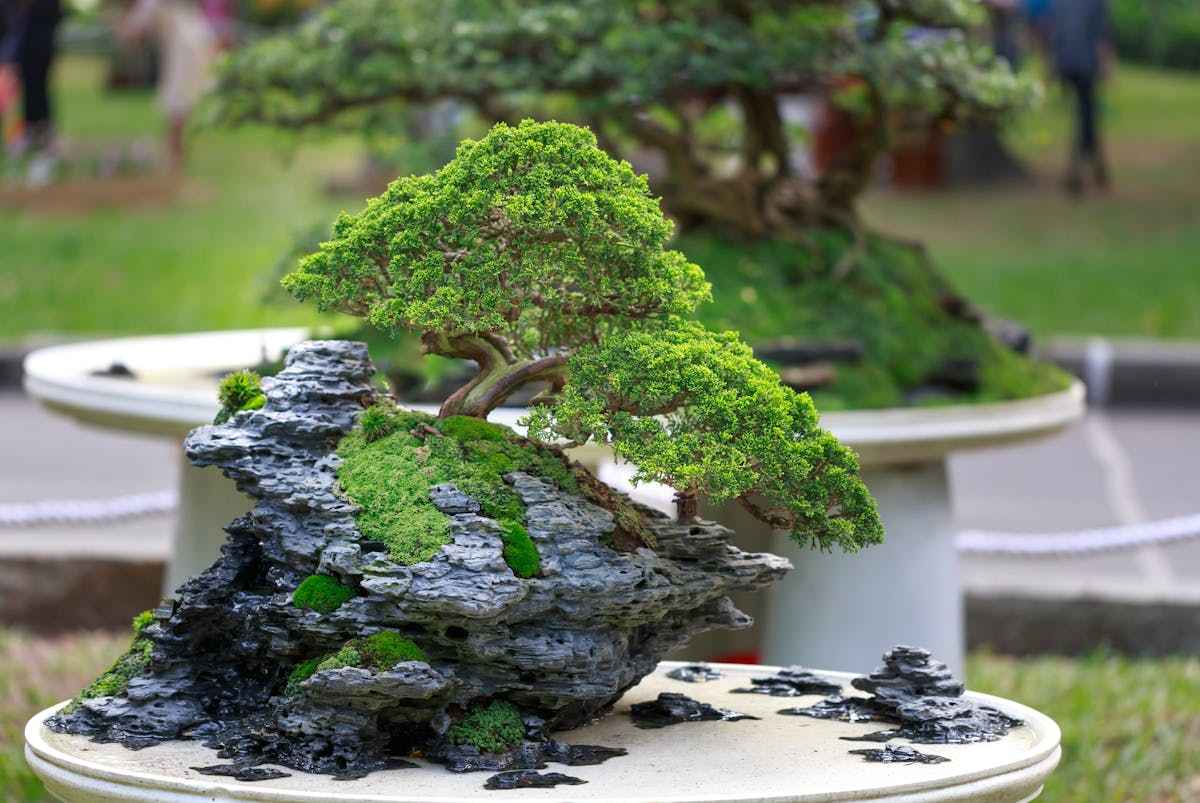
Bonsai Tree Trim
Knowing the natural growth patterns of trees helps us. It shows us how to use pruning to counteract apical dominance. Since most growth is in a tree’s central trunk, we know to prune the top and outer parts of a tree better. This forces the tree to grow more in its inner and lower parts. It gives control over the tree’s growth and design. Bonsai maintenance pruning.
The purpose of maintenance pruning is to maintain and improve the shape of a tree. As explained, trees focus their growth on the upper, outer part of their stems. Prune these areas on a schedule to maintain their health. This encourages growth closer to the tree’s interior.
You can prune outdoor bonsai trees from early spring to late fall, during the growing season. You can prune the indoor bonsai trees throughout the year.
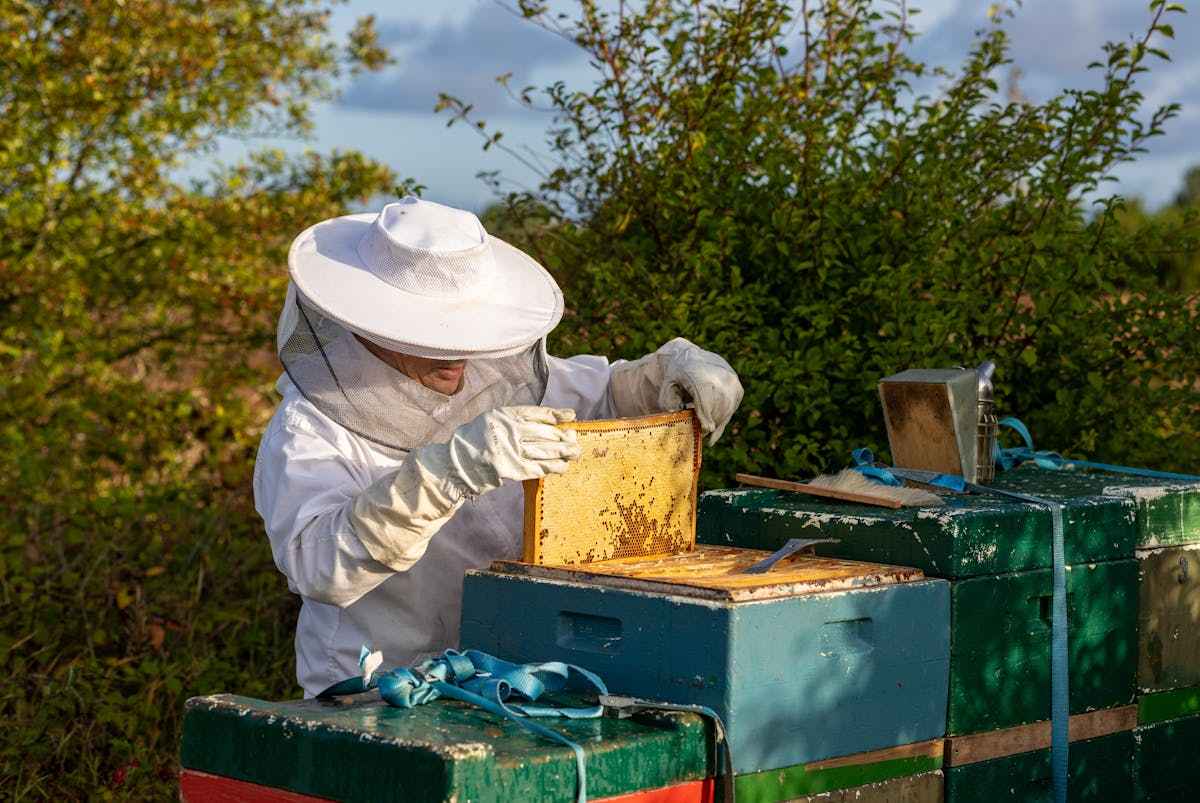
Bonsai Prune it
How should we prune it?
Maintenance pruning is necessary to maintain the shape of a tree. To do this, just prune the branches and shoots that are too long. Use pruning shears or regular pruning shears. Using bonsai tools will help you a lot. Prune your bonsai as part of its ongoing maintenance. It is important to force the tree to spread its growth and develop dense foliage. Prune most trees two to four times a year for maximum benefits. Bonsai pruning is one of the many topics covered.
Customized bonsai instruction for novice growers is available online. Check out the starter course for more information and a free lesson.
Pines and some evergreens should be hand-pinched rather than sheared. Using scissors, loppers, or shears to prune some types of conifers can result in brown, dead leaves on the cut. Grasp the sprout’s end with your thumb and forefinger, then pluck it. The sapling will break at its weakest point, and you will avoid browning or wilting. Different species need different care for pruning and digging. Some need a mix of both. Please see our bonsai tree species guide for tree species information.
Another bonsai method is stripping. It removes leaves from fallen or evergreen trees in summer. This forces the tree to grow new leaves. This technique reduces the size of the tree’s leaves and increases branching. For more information, see the leaves page.
Bonsai structural pruning
Giving a tree its basic shape often involves pruning large branches. Deciding which branches to keep and which to remove can be tough. It is an irreversible action. It also determines the tree’s appearance. Before diving into bonsai pruning techniques, please check the Advanced section. Here, you will find great references. They show experienced bonsai artists sculpting nursery plants.
The best time to prune a tree’s structure is early spring. In some cases, late autumn is also good, before and after the growing season. The exact time varies from species to species. In the tree types section, you can check the specifics of your particular tree. A Ficus bonsai needs different timing than a Juniper bonsai, for example.
How do you prune a bonsai?
Place your tree on a table and stand at eye level. Start by removing all the dead branches from the tree. Once done, examine your tree. Decide which branches to remove to achieve the desired design. The image below has some advice. But, designing your own tree is a creative process, not a matter of “rules.” Check out the Bonsai Styles page for some more tips and tricks.
Trimming large branches usually leaves ugly scars. But you can reduce them with special concave pruners. Seal large wounds with cutting paste, found in most online bonsai stores. The paste protects the wounds from infection and helps the tree heal faster. Again, using the right bonsai tools will be a big help. A healthy tree should have no problem with pruning a third of its leaves. Some say you should cut or remove an equal percentage of the roots after pruning a tree. However, most experts recommend only doing major maintenance once in a while (or even once a year). For example, if you prune the tree this spring, you must wait until next spring to plant or cut roots. The tree needs to fully recover from the pruning. See the Surface Roots page.
For more details on treezpedia.
